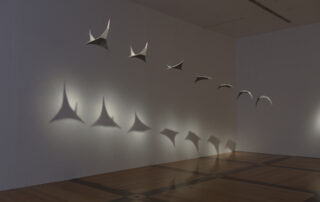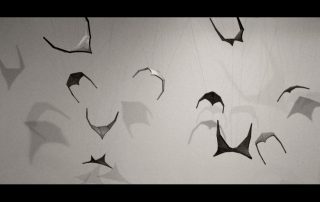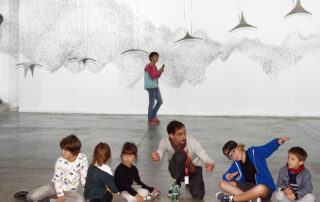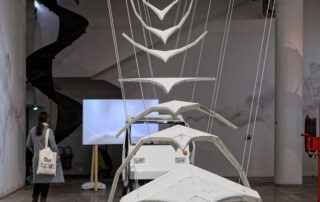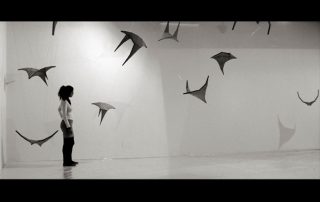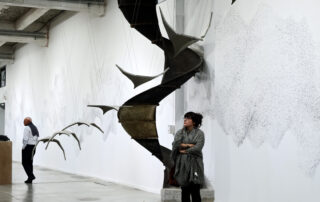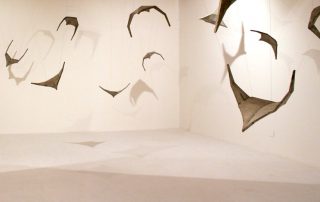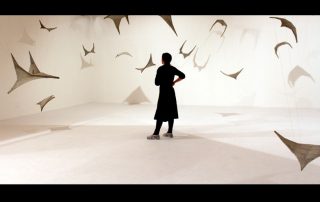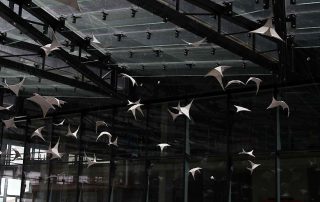Year: 2010
Dimensions: Variable
Technique: Concrete Shells (15mm of thickness)
Exhibition: Touched – Liverpool Biennial
Place: Mann Island, Liverpool – UK
(Transformation sequence between synclastic to anticlastic surfaces in 7 steps)The word synclastic describes a form in which the dominant curves both move in the same direction. When the two dominant axes curve in opposite directions the result is known as an anticlastic form. A bowl is a synclastic form and a saddle is an anticlastic form
Synclastic
adj.(Mathematics) Maths (of a surface) having a curvature at a given point and in a particular direction that is of the same sign as the curvature at that point in perpendicular direction [from SYN- (alike) + Greek klastos bent, from klan to bend]
Anticlastic
adj. (Mathematics) Maths (of a surface) having a curvature, at a given point and in a particular direction, that is of the opposite sign to the curvature at that point in a perpendicular direction
The hyperbolic paraboloid is a doubly ruled surface shaped like a saddle. In a suitable coordinate system, a hyperbolic paraboloid can be represented by the equation
A surface is doubly ruled if through every one of its points there are two distinct lines that lie on the surface. The hyperbolic paraboloid and the hyperboloid of one sheet are doubly ruled surfaces. The plane is the only surface which contains three distinct lines through each of its points.
A concrete shell, also commonly called thin shell concrete structure, is a structure composed of a relatively thin shell of concrete, usually with no interior columns or exterior buttresses. The shells are most commonly flat plates and domes, but may also take the form of ellipsoids or cylindrical sections, or some combination thereof. The first concrete shell dates back to the second century.
